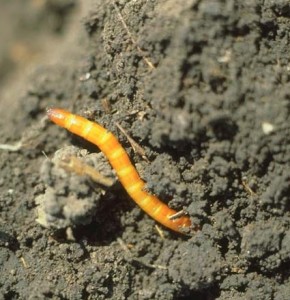Organic Vegetable Gardening – what to plant in July
…What to plant in July
Broccoli, Cabbage, Cauliflower, Chinese Cabbage, Garlic, Peas, Radish,
Silverbeet, Perpetual Spinach, Turnips
Planting Potatoes
If you live north of or within Auckland, you can grow potatoes all year round. (If you are south of Auckland you will need to wait until the ground gets warmer – we’ll keep you posted)
I’m using a few old recycle bins to grow mine in as they are so invasive I prefer to keep them outside of the crop rotation. Some people use 2-3 old car tyres stacked on top of each other, I am a bit hesitant to do this as I worry about what is in the tyre materials. You can also use ½ wine barrels or even just a compost bag.
Potatoes are grown from small tubers called seed potatoes. As soon as you buy them, place seed potatoes in a tray or empty egg carton with the shoots (growth buds) pointing up and leave in a light, frost-free place to ‘chit’ (grow shoots). When the shoots are about 2cm long they are ready for planting out. Prepare your potato bed a few days prior to planting day by digging trenches and laying comfrey leaves along them (see details below). If you don’t have any comfrey then use nutrient rich compost. Plant marigolds in amongst where the seed potatoes will be planted to help keep nematodes at bay, see section on these below. When you come to plant the tubers, they need to be roughly 5cm deep and about 30cm apart. Plant with the growth buds pointing upwards. As shoots grow from the potato, keep mounding the soil around them to prevent them from them going green. Always keep the top half of the foliage uncovered. As always make sure you mulch with pea straw, water the mulch rather than the leaves to help keep diseases from developing. You can start harvesting potatoes once the flowers are fully open. Once the leaves start to die back you know that the main harvest will be ready in a couple of weeks, stop watering at this stage. To harvest, loosed the soil and reach under the plant to find the new potatoes. Take out large potatoes and leave the smaller ones to continue growing. It is important that the growing potatoes are covered in soil at all times as sunlight will turn them green and toxic.
Alternatively if you prefer to wait until spring to plant out your potato tubers then wrap them in brown paper bags and store them in a biscuit tin away from the light. Potatoes are prone to several diseases so it really is worth buying government certified ones from a garden centre and for heritage organic varieties talk to www.koanga.co.nz
Comfrey
Although you don’t eat it, Comfrey is a valuable herb in the vege garden as it has a host of other uses. The roots of Comfrey mine deep into the soil, taking in rich nutrients that most plants would not reach and then keeps them in the leaves. It has high levels of the NPK, and therefore is an excellent source of potassium and nitrogen. The ideal place for comfrey is sunny with deep soil and most importantly a disused corner of the garden where it can spread and dig deep.
Although sun is ideal it is not that fussy, I have mine on the shady side of the house where it can spread freely and it grows really well. It is worth planting it in deep soil though so that the roots can dig deep. Decide carefully on a permanent spot to plant Comfrey, eradication can be difficult due to the deep furrowing roots. Comfrey is valued by herbalists for healing damaged muscles and ligaments.
Uses in the garden
- A compost activator, add to your compost bin to heat up the decomposing materials and enriches the compost.
- Put a handful of comfrey leaves into a bucket of rainwater and let them rot down for around 6 weeks to give you a rich liquid fertilizer for plants
- Lay comfrey leaves in a potato trench and leave for 3 days prior to planting the tubers to give them a potassium rich boost of fertilizer.
- Use as a Comfrey leaf mulch around plants, by layering leaves around the stems of plants. Potassium will slowly be released to the plants as the leaves break down – Great for tomatoes, beans and fruit bushes.
- Use wilted leaves as a nutrient rich Chicken feed
Nematodes (also known as Wireworm or Eelworm)

Nematodes are little worms that feed on the roots of vegetables. There are a number of different types of nematodes – Root knot, cyst, sting, root lesion or meadow nematodes. It has to be said that some types can be beneficial in controlling other pests such as grubs and just because you have them in your soil it doesn’t automatically mean you will have a problem, they are also good at decomposing organic materials. However, if your vegetables are getting attacked you know you’re in trouble. They particularly like potatoes, corn, peas, lettuce, carrots, tomatoes, broccoli, cabbage and cauliflower. Signs to look out for are wilting of plants and swellings on the roots of vegetables.
To get rid of nematodes, try the following;
- dissolve 2kg of sugar in a bucket of water and drench the infested soil.
- Make a marigold tea by chopping up a whole plant and soaking it in water then pouring it around the affected area.
- Always plant marigolds in every bed and especially if planting potatoes. They repel nematodes.
- Remove the infected plants and destroy them, don’t put them in the compost bin. Leave the soil completely free of weeds and plants from September – May. When replanting do not sow similar vegetables.
We also offer Kits sets for DIY enthusiasts and a consultancy service for people who really want to do it all themselves but just need a bit of guidance. For more on our services go to
Happy Gardening!
Kind regards,
Sarah Davies www.patchfromscratch.co.nz







Hi,
Can you tell me where I can get comfrey seed or plants from. Thanks
Peter
Hi Peter,
Weathersfield organics sells comfrey and will courier it to you, their number is 09 4203002
Alternatively I have heard that Milllstream gardens sell comfrey as well 06 8781511. If you know anyone who has some and you can get a cutting of a root from them it will take easily if you plant it.
Hi, Thanks for a wonderful helpful website
Do you perhaps know if seed potatoes contain any added hormones to let them sprout.
Does the seed potatoes contain any chemicals to prevent disease?
What is the difference between seed potatoes and normal potatoes which were allowed to sprout?
Kind Regards
Potatoes are susceptible to diseases that can fester in the soil and be hard to get rid of. The seed potatoes are government certified. Non organic seed potatoes may contain chemicals to prevent diseases but personally I would only use organic seed potatoes. http://www.koanga.co.nz has a good supply at the moment and will post them to you.
how to stop wire worm
Hi, I’m looking for an organic chicken feed locally,or to get freighted in to Kapiti coast.Also are wattle seeds good for chickens.looking for other common garden plants to harvest for chooks.Cheers,John
Still haveing problem with wire worm can you advise me on what to do
cheers linda
Hi – First ever vege. garden this summer. have been busy making compost since Autumn. Have been turning the compost heap regularly in recent weeks and have discovered nematodes throughout. Is the compost heap going to be good for anything?
Hi Robyn,
Your compost will be fine – the best check is to rub the compost between your fingers to look for humus content – if it is dark almost soft plaster sine then it will be ready. The fact worms are still there is ok too. You should not need to turn the entire compost more than once. Are you making compost in a container or a heap?
Regards
Tim
hi could you tell me how to get grass grub out of our rasied vege garden beds , there is a lot of them,like a little plage of them, we like to be organic,as it is in the vege patch. appart from digging out by hand what can we do.
many thanks
Thanks for your column. It is wonderful. Can you please tell me how can you grow your own seed potatoes? Where do they come from if you can not grow from pototoes you have grown yourself?
Hi
For wire worm, grass grubs and other soil insects use Wallys Neem Tree Granules at planting time, mixed in soil, under seedling or potato and also on soil surface. Natural product.
Any potato with unsprouted eyes will produce a crop, if the potato used is carring a disease or pest then you will likely have that problem, hence the reason for certified potatoes been free of problems at time of certification.
Other wise potatoes can be grown from seed collected from the seed pods that look like green tomatoes on the tops of potato plants after flowering.
Wally Richards
Can I plant potatoes in Drury? Also what kind grow best here?